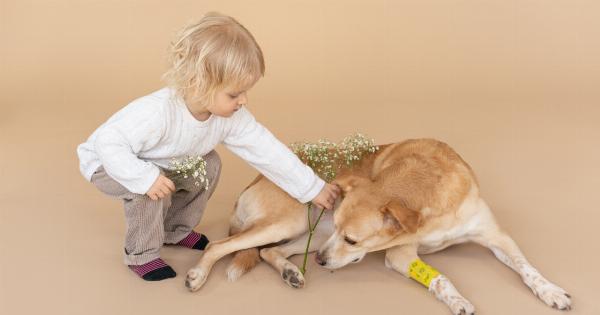Being diagnosed with cancer can be a traumatic experience for anyone, especially children.
From the numerous rounds of chemotherapy, to the anxiety and fear that comes with the endless pokes and pricks of needles, it can be an overwhelming and scary time. In the midst of all this, therapy dogs have become an important tool in helping children with cancer cope.
What are therapy dogs?
Therapy dogs are trained dogs that provide therapeutic benefits to people in need, such as children with cancer. These dogs undergo extensive training to help them interact safely and positively with people.
They are chosen for their calm temperament, friendliness, and ability to provide comfort to those in need.
Benefits of therapy dogs for children with cancer
Therapy dogs provide a variety of benefits for children with cancer. The following are some of the benefits that have been identified:.
- Reduced anxiety and stress: Therapy dogs can help reduce anxiety and stress levels in children. Studies have shown that spending time with a therapy dog can lead to decreased levels of cortisol, which is a stress hormone.
- Improved mood: Therapy dogs can help improve the mood of children with cancer. Spending time with a dog can lead to the release of oxytocin, a hormone that promotes feelings of happiness and well-being.
- Decreased pain: Therapy dogs can help decrease pain levels in children. The distraction of interacting with a dog can help take the focus away from pain and discomfort.
- Increased social interaction: Children with cancer often experience social isolation due to their illness. Therapy dogs can provide a source of social interaction, which can help improve overall mental health.
How therapy dogs work with children with cancer
Therapy dogs work in a variety of ways to help children with cancer. Here are some examples of how therapy dogs interact with children:.
- Providing comfort during medical procedures: Therapy dogs can be present during medical procedures to provide comfort and support to children. For example, a dog may lie next to a child during a medical procedure, which can help the child feel less anxious and stressed.
- Playing and interacting with children: Therapy dogs can play with children, providing a source of joy and happiness. This can help improve the overall mood of children and help them cope with the challenges of their illness.
- Providing emotional support: Therapy dogs can provide emotional support to children with cancer. The dogs are there to listen and provide comfort to children who may be feeling scared, anxious, or sad.
- Accompanying children to appointments: Therapy dogs can accompany children to appointments, whether it be at a clinic or a hospital. This can help children feel more comfortable and less alone during what can be a stressful experience.
Types of therapy dogs
There are several types of therapy dogs that work with children with cancer:.
- Visiting therapy dogs: These dogs visit hospitals, clinics, and other healthcare facilities to provide comfort and support to children with cancer.
- Residence therapy dogs: These dogs live in hospitals or other healthcare facilities and work with children on a regular basis.
- Facility therapy dogs: These dogs work in healthcare facilities, such as hospitals or clinics, and interact with children on a daily basis.
How to find a therapy dog program
If you are interested in finding a therapy dog program for your child with cancer, there are several resources available:.
- The American Kennel Club: The American Kennel Club has a list of therapy dog organizations by state on their website.
- Therapy Dogs International: Therapy Dogs International is a non-profit organization that provides training and certification for therapy dogs. They also have a list of registered therapy dogs on their website.
- Local hospitals and clinics: Contact your local hospitals and clinics to see if they have a therapy dog program.
Conclusion
Therapy dogs are an important tool in helping children with cancer cope with the challenges of their illness. They provide emotional support, decrease anxiety and stress levels, and improve overall mood.
If you are interested in finding a therapy dog program for your child, there are several resources available for you to use.































